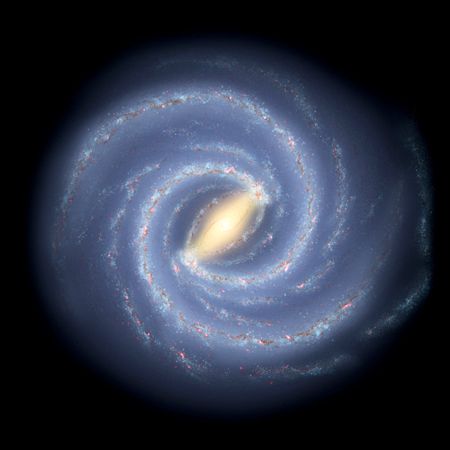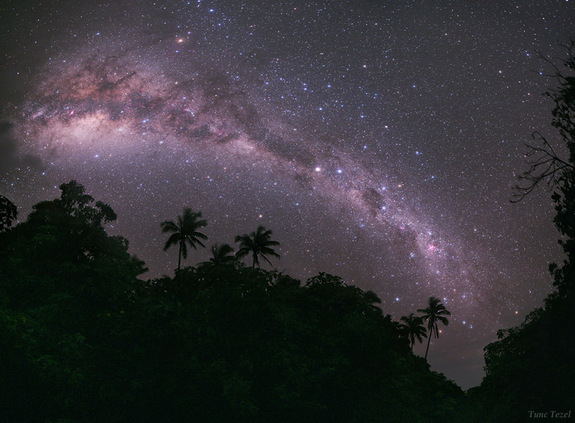When you gaze into the sky at night, almost everything you see is part of the Milky Way galaxy. On a dark night, it can be seen as a band of faint light stretching across the sky. This faint glow is the combination of light from distant stars.
Ancient communities observed this band of light and likened it to a path of milk. No wonder it is called the Milky Way galaxy.

What is the Milky Way Galaxy?
The Earth, our home, is a planet in the solar system. The solar system is in the Milky Way galaxy and the Milky Way galaxy is, therefore, our home.
A galaxy is a gigantic collection of stars, dust and gases. The Milky Way galaxy is a spiral galaxy with a bulge in the middle and arms that stretch from its core.
Milky Way Galaxy Facts
The Milky Way galaxy is a part of a set of galaxies known as the Local Group. This group is made up of about 30 galaxies located within 3 million light years. The local group belongs to the Virgo supercluster that is made up of about 5000 galaxies.
The Milky Way is so vast that light takes 100,000 years to cross from one side to the other. If the sun were the dot on top of an ‘i’, the Milky Way would stretch from Los Angeles to New York City.
The galactic center is located 26,000-28,000 light years away from the sun beyond the border of constellations Sagittarius and Scorpio. At its core is a supermassive black hole that swallows anything that passes close by.
A typical galaxy has hundreds of billions of stars. Our galaxy is estimated to have about 200-400 billion stars.
Old stars are located at the central bulge where the stars are packed closely together. Our sun is located towards the edge about 26,000 light years from the galactic center.
Its major arms are the Perseus Arm, Sagittarius arm, Centaurus arm and Cygnus arm. Younger stars are located in the arms with the star and gases that combine to form new stars. Our sun is located in the outer sections of the galaxy towards the edge within a minor arm of a body of stars- the Orion arm.
Our galaxy eats smaller galaxies that are near it. It is like a shark eating smaller fish in the ocean. There is evidence that it does this. There are clumps of stars just outside the galaxies that could be the remains of smaller galaxies consumed as early as one billion years ago.
The Milky Way Galaxy is Rotating
It spins once every 200-225 million years making it look like an enormous whirlpool or a hurricane when viewed from a distance.
The Earth orbits the sun and the sun orbits the center of our galaxy at a speed of half a million miles per hour.
A galactic year is the time our solar system takes to complete one orbit of the galaxy. It is also referred to as a cosmic year and it is about 225 million years long. In its lifetime, it has only completed about 25 orbits.
Is The Milky Way Galaxy Visible?
On a clear, moonless night, the Milky Way galaxy is visible with the naked eye as an area of the sky with a band of stars.

A better view of it is obtained when observed in infra-red light that can penetrate through the clouds of interstellar dust and gases that block our view of the galaxy in visible light.
